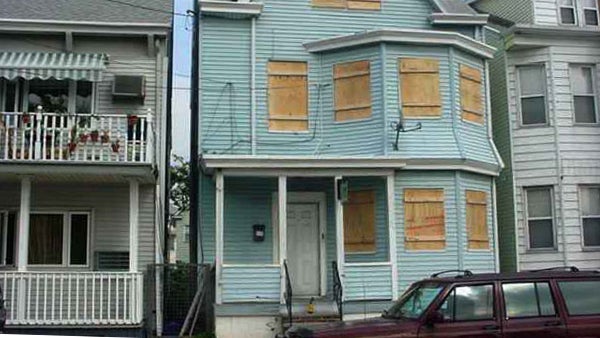No buyers found for Trenton’s ‘Homesteading’ program

(Image courtesy of NJ Spotlight)
Launched with fanfare last year, Trenton’s “homesteading” program to sell very low-cost houses to first-time buyers has yet to close a single deal.
City officials plan another round of public outreach after every applicant in the initial group either dropped out or failed to meet the program’s financial requirements.
The retooling comes as the Trenton metropolitan area ran up the nation’s second-highest foreclosure rate in the first quarter of this year, trailing only Atlantic City. Data reported on the restoringtrenton.org website shows 3,556 buildings, 15 percent of the city’s total, are completely vacant.
Related story:
“We do have people who are interested” in homesteading, said Diana Rogers, the city’s acting director of housing and economic development. “At this moment, they’re not able to qualify financially with our bank partner,” M&T Bank, which provided information for applicants.
The city and its partners, including nonprofit groups, will stick with the initiative, including greater focus on educating potential applicants about how to build and maintain their credit-worthiness, Rogers said.
“The goal is to help people get to a point where they are creditworthy again,” she said. “The banking industry wasn’t willing to take people below a certain credit score.”
Keeping people who do qualify also has proven “challenging,” according to Rogers. She acknowledged that some who looked into the program have been reluctant to be its first adopters. Rogers was unable to provide numbers or how many dropped out and how many were rejected, but suggested some may return as it continues.
“To a certain extent, we’re going to have to have some of those pioneers,” said Julia Taylor, managing director of Isles, a local community development nonprofit and key participant in the initiative. But people don’t want to feel like they’re jumping off a cliff,” she said.
Taylor also explained that the launch last fall, a year after the concept was broached, treated it more as “a government program” than as a collaborative process.
“Much of the publicity focused on ‘homes for $1,’ which was never going to happen,” Taylor said.
While the program’s price estimates did range from $1 to $10,000, many, and especially the lowest-priced ones, are deteriorated or derelict structures “that are going to require a great deal of rehabilitation,” she said.
While applicants might qualify to buy a property, many did not have the resources to borrow the funds necessary to rehabilitate it, she said. People need to know up front that they need to have money to invest after the purchase, she said.
Potential buyers with a better understanding of the challenges may have been deterred by the lack of information connecting the homestead program with other redevelopment efforts around town by the city, nonprofit groups, and private developers, Taylor said.
For those who are qualified, the city does point out that the program comes with strings attached, notably a requirement that the purchaser reside in the house for 10 years.
The goal is “stable neighborhoods,” Rogers said, not fueling the speculative real-estate market. “You can only buy one house” through homesteading, “and you have to actually live in it,” she said.
The homestead initiative is not happening in a vacuum, Rogers said. She pointed to construction transforming former Roebling Steel factory buildings into a mix of loft apartments, stores, restaurants, and public space. The city is finalizing details of another mixed-use project to convert the old Bell Telephone building on East State Street, a prominent but long-vacant edifice.
Isles is putting the finishing touches on a proposal to the city for a “canal-creek” arts district in part of the area bounded by the D&R Canal and Assunpink Creek, Taylor said.
And in its ongoing effort to deal with vacant properties, the city is pursuing a more “strategic” approach, singling out properties that might be tied to other activities or improvements in their neighborhoods, she said.
“A lot of these recently foreclosed properties have been selected so that they could be funneled into the homestead program,” she said.
Maps of foreclosed properties, details of redevelopment initiatives and data on the city’s neighborhoods are among the items accessible on the initiative’s website.
“We might consider a marketing campaign focusing on what’s going on in the neighborhood rather than the details of the particular homestead property,” Taylor said.
With many hopeful signs around the city, publicizing them might give buyers being asked to make a 10-year commitment to the city more confidence in what the future will bring, she said.
__________________________________________________
NJ Spotlight, an independent online news service on issues critical to New Jersey, makes its in-depth reporting available to NewsWorks.
WHYY is your source for fact-based, in-depth journalism and information. As a nonprofit organization, we rely on financial support from readers like you. Please give today.




